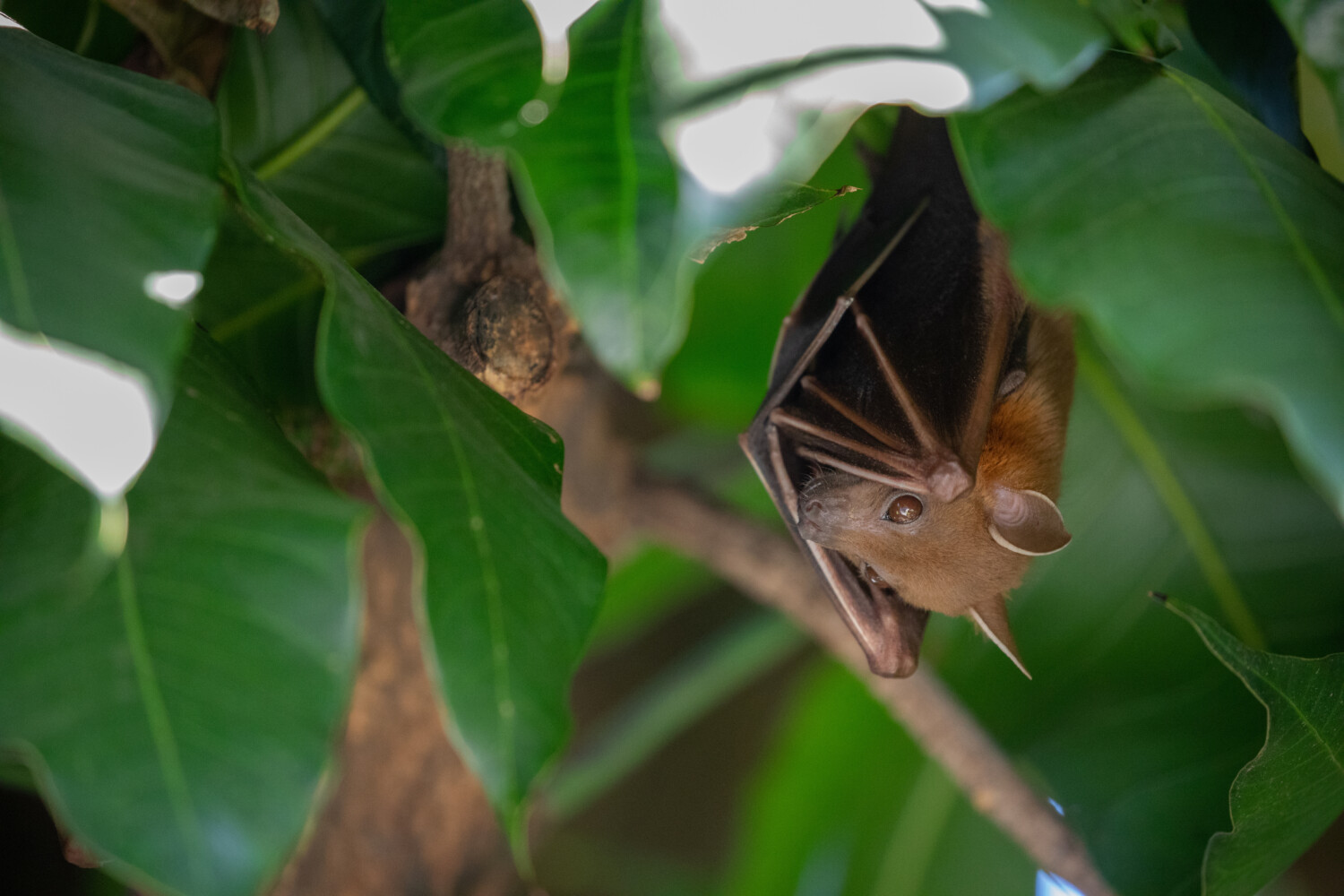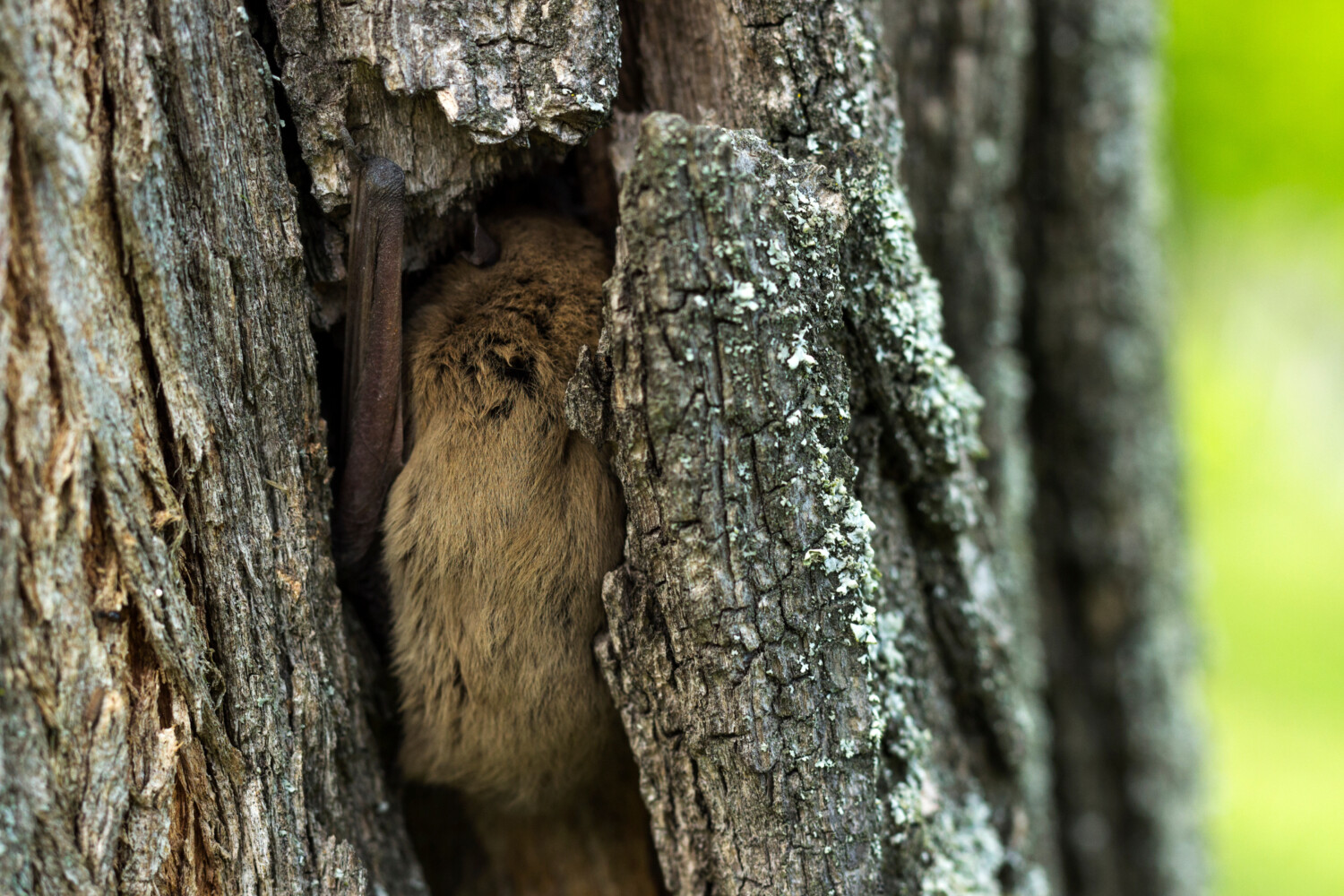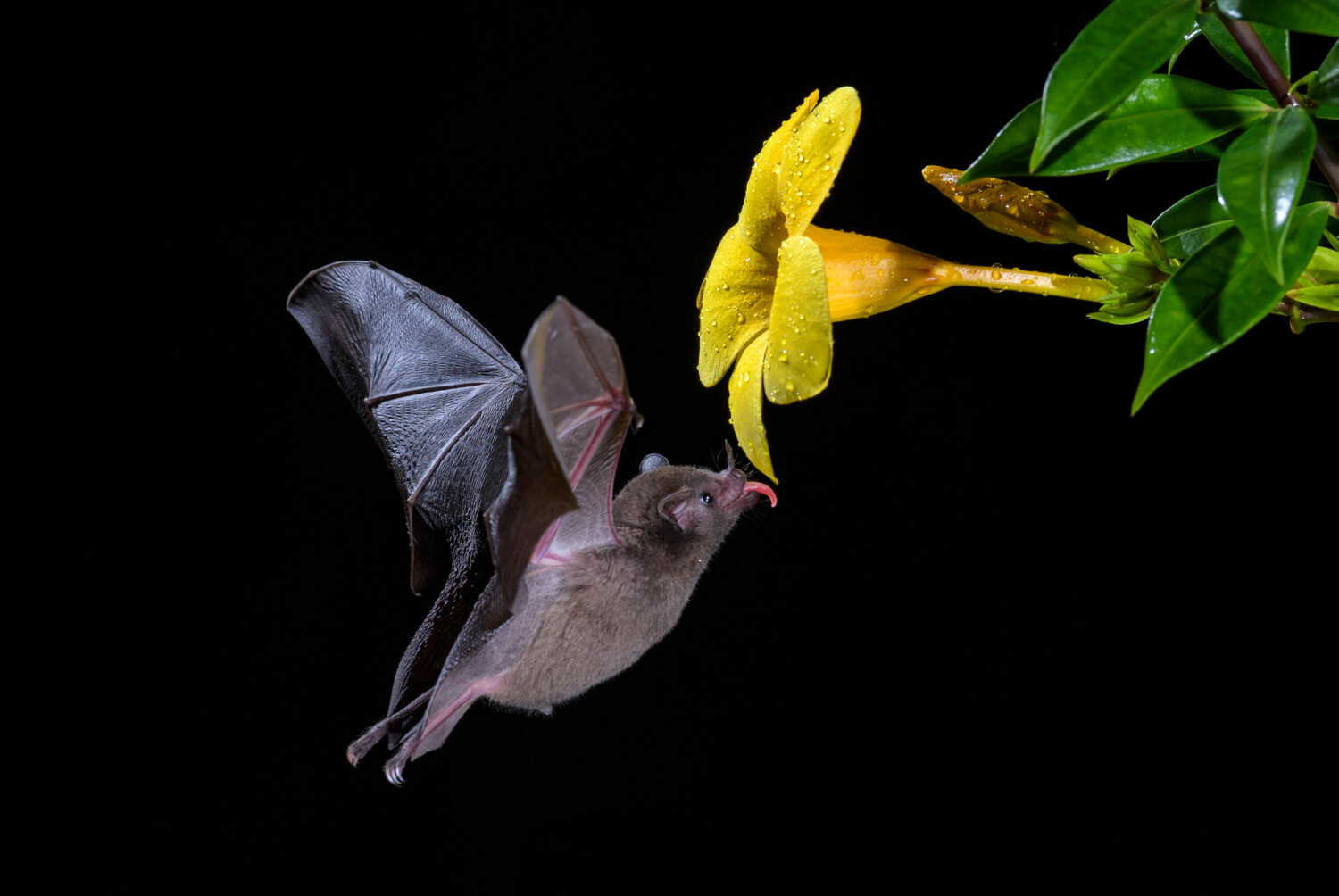Here are three commonly held beliefs about bats: They’re blind, they often have rabies and they want to drink your blood.
Would you be surprised to hear that none of these are actually true? All three are myths that contribute to this little mammal’s bad rep. (Vampire movies haven’t helped, either.)
In fact, we could all benefit from attracting bats to our yards and gardens. While it’s true that they can carry rabies, some animal experts now suspect that less than 1% of them do. As for the myth about sucking humans’ blood, they actually love to feast on pesky insects — the ones that humans often want to be rid of.
The Benefits of Bats
Bats — the only mammal that actually flies — live all over the world and in most regions of the U.S. According to the U.S. Department of the Interior, there are 1,400 species, and 45 of them live in the U.S. or Canada. During the day, they stay out of sight, sleeping in trees, caves, rock crevices and other out-of-the-way places. But at night, they play an important role in our ecosystem.
While professional exterminators charge an average of $350 to $550 for a mosquito treatment, bats perform this service for free. Nearly every U.S. species of bat feeds on insects as its primary food source, consuming anywhere from 600 to 1,000 bugs an hour and keeping nature in balance.

MORE: How to make a DIY bee bath for your garden—and why you should
Cory Holliday, a cave expert and program manager at The Nature Conservancy, explained to the Washington Post that bats arrive on the scene at night, just when mosquitoes are most active and abundant. So bats can keep that population of actual human blood suckers from getting out of control.
“An individual [bat] can be eating almost its own weight every night, especially at the time of year when we have adult female [bats] nursing young or producing milk,” he told the Post.
Bats also feed on garden pests like plant-eating beetles, caterpillars and aphids (the enemy of your tomato plants). In addition, they’re a boon to your garden since they provide a rich source of fertilizer for plants. Bat guano (poop) has high levels of plant-enriching phosphorus and nitrogen.
Bats are important pollinators as well. Nectar-eating bats (which live mostly in the southwest) help in the reproduction process of hundreds of species of flowers and fruit like agave, avocados and mangoes. In fact, some plants are exclusively pollinated by bats, like bananas. Along with that, they are seed dispersers, helping to restore forests by dropping tree seeds back on the ground.
OK, now you know why you should encourage the presence of bats. But how do you get them to come to your house and stay there?
MORE: ‘No Mow May’ helps bees and lets you relax instead of mowing the lawn
Attract Bats With the Right Trees
Bats look for places of shelter and safety. They love to burrow into the crevices and deep hollows in trees, and they especially love dead trees where they can roost under flaking bark. So, if you have a dying tree that you’re tempted to remove, consider letting it stay where it is. It could serve as a bat habitat.
If you don’t have trees yet, start planting some! Joy O’Keefe, an assistant professor and wildlife extension specialist at the University of Illinois, told the Washington Post that bats especially like trees that get a lot of sunshine and stand higher than other trees, but these are getting harder to find.
“Plant long-lived trees like oaks, which will provide both foraging and roosting habitat … [as well as] fast-growing trees like pines and maples, which will provide roosting space under the bark, or in cavities inside dead branches,” she said.

Tempt Them With Suitable Water Sources
Bats need water, too, and a simple bird bath won’t do the trick.
“You are going to need a longer stretch of water, because they will swoop down and drink while they’re flying — they call it ‘drinking on the wing,'” Erin Cord, community engagement manager at Bat Conservation International, told MarthaStewart.com. “They swoop down, open their mouth, and scoop up water as they’re flying by.”
She said that a pond, trough or pool that extends about 7 to 10 feet would work best.

Make Your Garden Bat-Friendly
These nocturnal animals will be more attracted to a yard with night-blooming plants. Try adding to your garden with evening primrose, jasmine and gardenia (among many other night bloomers) to draw them in.
Another tactic is outdoor lighting. Decorative landscape lamps attract flying insects, which in turn attract bats.

MORE: How to plant and grow a thriving wildflower garden
Build a Bat Box
If your property has few to no trees and you want to attract bats quickly, consider constructing a bat box that’s at least 20 inches by 24 inches. Bats prefer to roost in trees, but if there aren’t any around, they may take you up on this manmade habitat.
Use rough wood that bats can cling to, and suspend the box on a post 10 to 20 feet off the ground. Carve a hole in the bottom of the box for bats to fly into and add a few different compartments inside. The box should receive a decent amount of sun (six to eight hours’ worth) to maintain warmth.
If bats do move in, you’ll need to maintain the box. If the bats fly south for the winter, use this time to check for leaks or wasps.
“You and the bats could be in a committed relationship, possibly for many years,” O’Keefe told the Washington Post.
Bat Conservation International offers design ideas, tips, and instructions on its website, if you decide to go that route.
A Final Tip for Attracting Bats
If you’re really trying to draw bats to your yard, using weed killers and insect repellents will hurt your cause.
“We really recommend that if people are trying to attract more bats to their yard that they stay as organic as possible,” Cord said. “If you have more pesticides, you’re putting more chemicals into your lawn and the insects are either going to absorb those chemicals or be killed and then there isn’t food for bats.”
And if you do attract bats, maybe you won’t need those chemical solutions, anyway!
This story originally appeared on Simplemost. Check out Simplemost for additional stories.



